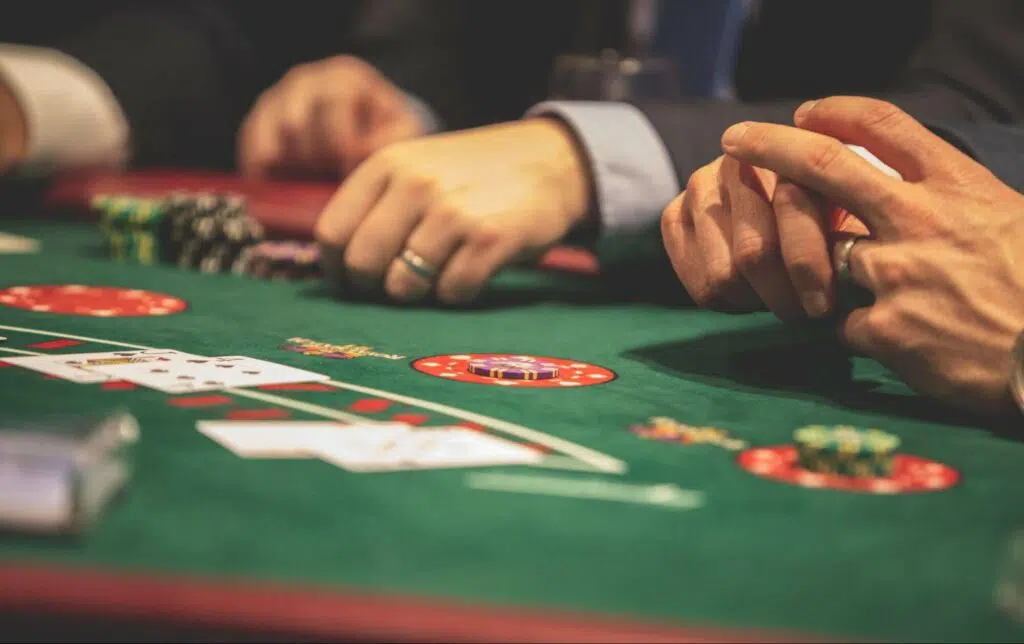Blackjack Rules: How to Play Blackjack
Learn how to play blackjack and improve your chances of beating the house.
Blackjack is one of the most popular and thrilling card games pitting players against the dealer and each other. By learning how to play blackjack, you can narrow the house edge, which is already the lowest of any casino game. In the following guide, we’ll walk you through the rules and a few effective strategies.
History of Blackjack
Dating back to the 1700s, blackjack is believed to have originated in France. In its original form, the game was called Vingt-et-Un or twenty-one. The game exploded in popularity and quickly spread throughout the European continent. It eventually made its way to North America via French colonists during the 18th century.
By 1820, the game was a popular feature at legal gambling halls in New Orleans, but the rules of blackjack were different back then. For example, only the dealer could double.
The Blackjack We Know Today
Fast forward to the 20th century when the casino version of 21 was formally dubbed blackjack. Players didn’t show a lot of interest in 21 when it appeared in Nevada casinos, prompting owners to come up with generous bonuses, including the ten-to-one payout when players get an ace of spades or any blackjack (jack of spades and jack of clubs). The tables soon became known as the blackjack tables, and the name stuck.
How to Play Blackjack
The goal of the game is simple. Players have to beat the dealer’s hand without going over 21. If they go over 21, they lose. Blackjack dealer rules are different. They’ll continue to hit until their cards total 17 or more.
Today, there is no shortage of crypto casinos offering blackjack. The most popular bitcoin blackjack sites have generous bonuses and support a variety of currencies, including Bitcoin Cash, Ether, and Dogecoin. In addition to the advantages of crypto gambling, these online venues also offer the thrill of live dealer games and regular promotions.
The rules for blackjack online are the same as in traditional casinos. Some of the advantages of playing online include lower limits and fewer distractions. But if you’re craving the game’s social aspects, you should stick to brick-and-mortar casinos.
Buying Chips
The first thing players need is chips. Tables only accept cash, while cages may allow you to use other forms of payment to purchase the chips. The money needs to be placed on the felt of the table because dealers won’t take anything from the players’ hands for security reasons. A pit boss may verify the transaction when the money is placed on the table.
Placing a Wager
At the start of the round, players place a bet in the betting circle. The blackjack betting limits are displayed on the table. Usually, the minimum bet is $5, but the limits vary depending on the casino.
Dealing the Cards
Right after placing the bet, the dealer deals the cards clockwise. One card face-up goes to each player, and then one card goes to the dealer face down. After that, another face-up card is dealt to the players and a face-up card to the dealer. Players will have two cards, face-up, and the dealer will have one face-up and one face-down card.
Playing the Hand
The dealer starts with the person on the left, commonly referred to as first base. The player has the option to “hit” or “stand”. If they hit, they get more cards to improve their hand, and if they stand, the dealer moves on to the next player.
When getting the cards, players need to do the math to keep track of their hand total. If they get an ace and any ten, that’s a blackjack. In that case, the dealer pays the player one-and-a-half times their bet unless the dealer has a blackjack as well. If they do, the player won’t win anything but won’t lose their original wager. This is known as a “push”.
If both don’t have a blackjack, the dealer will wait for the player to choose whether to stand or hit. If the hand exceeds 21, the players “bust,” which means they lose. If the players get an ace with any card other than a ten, Jack, Queen, or King, this is called a “soft hand”. It’s up to the player to decide whether to draw more cards. But if you have a soft 19 or higher, that’s likely to be a winning hand, and taking another card could take you above 21. Meanwhile, any hand lower than a soft 17 usually requires another card.
The Pack
The blackjack card game is typically played with up to eight 52-card decks. The six-deck game of 312 cards is most common in casinos. When the dealer reaches the plastic insert card, it’s time for the deck to be reshuffled. This is one of the vital blackjack casino rules. Dealers use a plastic card-dispensing device known as the six-deck or eight-deck “shoe”.
Card Value
Eight cards in the deck (2-9) count at face value. Face cards (Jack, Queen, King) are worth 10. If players get an ace, it can be counted as 1 or 11, depending on which value helps their hand.
The Cut and Shuffle
The dealer shuffles the cards and selects one player to cut. The plastic card is inserted to prevent the last 60 to 75 cards from being used in a game.
Naturals
When a player gets an ace and a ten right after the first cards are dealt, they get a count of 21, called a natural or blackjack. If the dealer does not have a blackjack and one of the players does, that player will be paid one and a half times the bet amount. Similarly, if the dealer is the one with a natural, they will collect the bets of all those who do not have naturals. If the dealer and the player both have naturals, the player takes back the chips.
Signaling Intentions
Players use hand signals to tell the dealer whether they wish to hit or stand. Vocal communication isn’t sufficient at a casino because the cameras need to record your responses.
When a player wants to hit, they tap the felt with their finger. When players want to stand, they wave their hand or place an open palm over the table. Blackjack betting rules involve a number of other hand signals that players should be familiar with, such as the “surrender”, which requires you to draw a line across the table behind your bet.
Splitting Pairs
Blackjack split rules are simple. When a player gets two identical cards, they can decide to split them into two separate hands. The rules dictate that the player needs to play the hand to the left first and then the right. These two hands are separate, and the dealer treats them as such. If a player gets a pair of aces, they are given one card for each ace, without the possibility to draw again. If a ten-card is dealt with an ace, the payoff equals the bet.
Doubling Down
When players get two cards that total 9, 10, or 11, they have an option to double down their bet. When it’s their turn, they can place another bet equal to the original one, and they’re given just one card, face down, which they turn over when the bets are settled. The dealer cannot split or double down.
Insurance
If the dealer gets an ace face up, players can bet on the dealer’s second card being a ten, making it a blackjack. If it turns out that the dealer got the blackjack, players who took part in the insurance bet will be paid double the amount of the half-bet they invested. This sort of bet isn’t always a sensible option because there is no way to assess the probability of the dealer drawing a ten.
Strategies
When it comes to building your bankroll in blackjack, the strategy must revolve around the dealer’s upcard. If the dealer’s upcard is 7, 8, 9, 10, or an ace, the players should keep drawing until they get a total of 17 or higher but less than 21. While it’s critical to know the basic blackjack rules, players also need to educate themselves about winning strategies.
If the dealer’s upcard is 4, 5, or 6, the player shouldn’t draw after they’ve reached a score of 12 or higher. The best strategy is never to risk-taking another card if there’s a chance of going bust. The player should work to force the dealer to go over 21 and bust. When the dealer gets an upcard of 2 or 3, the player shouldn’t draw more cards after they’ve scored 13 or higher.
The best advice for soft hands is to keep drawing until you reach at least 18. If a player has a total of 11, they should definitely double down. Unless dealers draw a ten-card or an ace, they will likely double down. With a score of 9, doubling down is advisable only in cases when the dealer’s card ranges from 2 to 6.
When it comes to splitting, a pair of aces or 8s should be split. The same ten cards should not be split, and neither should a pair of 5s. It is not advisable to split pairs of 2s, 3s, 4s, or 7s when the dealer has an eight, nine, ten, or an ace.
Conclusion
Blackjack often comes off as a game for mathematicians and intellectuals. But mastering the strategies and rules of blackjack isn’t a complicated process. Although the game has been around for centuries, technological advances have enabled modern-day players to enjoy it at a long list of online venues that support cryptocurrencies and offer generous welcome bonuses and regular promotions.
FAQ
Are 21 game and blackjack the same?
The answer is yes. The game was originally known as 21 because the players needed to reach a score of 21 to get a blackjack.
Is blackjack easy to play?
Although it may seem complicated at first, casino blackjack rules are easy to master, and the players quickly get used to the flow of the game. Blackjack offers great odds for beating the house for those who understand a few simple rules.
How many cards do you get for blackjack?
Players get two cards. They’re usually face up for the players, whereas the dealer gets one face-up and another face-down card.







